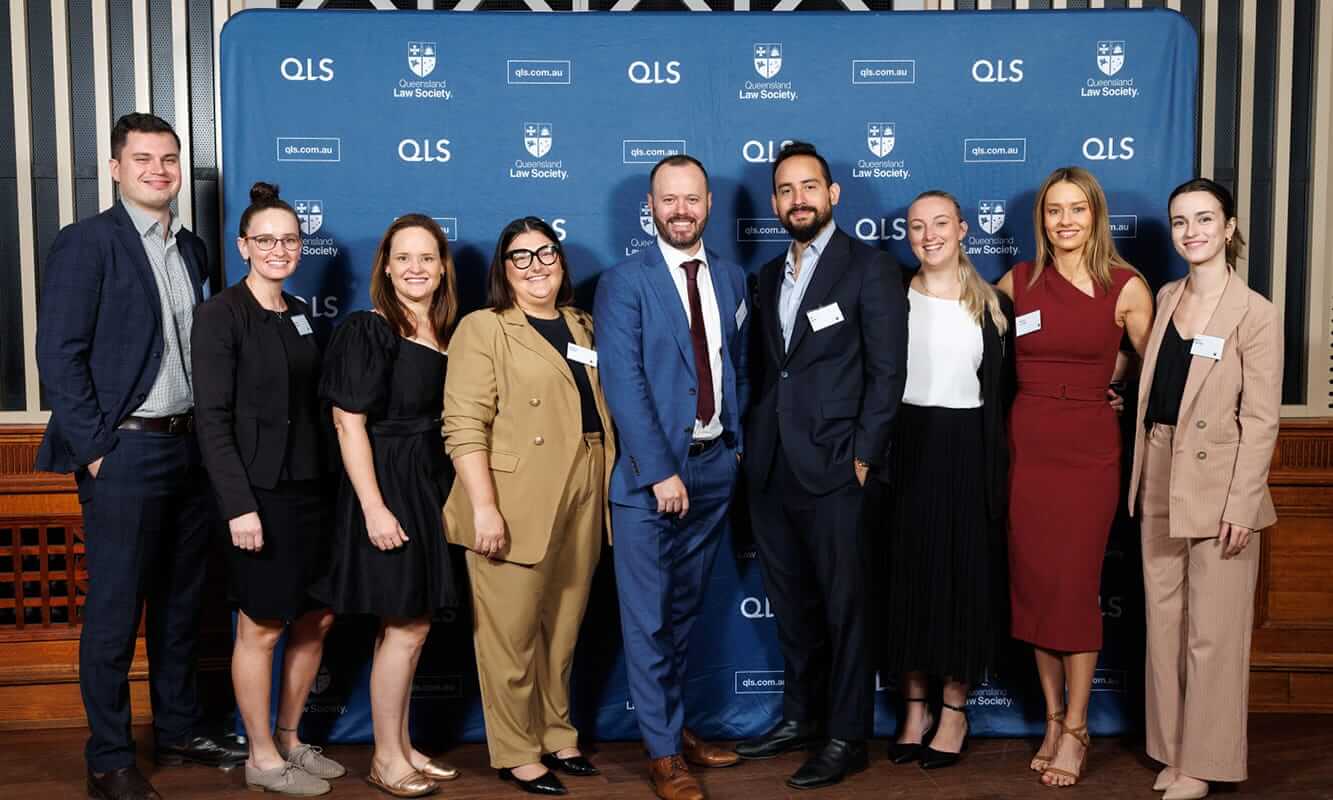The Child Protection Act 1999 (Qld) (the CP Act) provides a statutory regime for the protection of children in Queensland.
The paramount principle for administering the CP Act is set out in s5. That is, the safety, wellbeing and best interests of a child, both through childhood and for the rest of the child’s life, are paramount.
The general principles set out in s5B of the CP Act include:
(a) a child has a right to be protected from harm or risk of harm
(b) a child’s family has the primary responsibility for the child’s upbringing, protection and development
…
(k) a child should be able to maintain relationships with the child’s parents and kin, if it is appropriate for the child…
Section 5BA sets out principles for achieving permanency for a child and the need for children to have ongoing, positive, trusting and nurturing relationships and stable living.
For Aboriginal and Torres Strait Islander children, s5C of the CP Act sets out additional principles for placement, prevention, partnership, participation and connection, including:
(b) the long-term effect of a decision on the child’s identity and connection with the child’s family and community must be taken into account.
Decision-making under the CP Act is variously undertaken by the Chief Executive1 or their delegate, the Childrens Court and the Queensland Civil and Administrative Tribunal (QCAT). Our focus in this article is on review proceedings brought in QCAT.
Our contention is that the guiding principles set out in the CP Act are a natural fit with therapeutic jurisprudence. We consider that therapeutic jurisprudence, which is an interdisciplinary method of applying the law, can positively impact on the social and psychological well-being of families and children.
When appropriately applied in child protection proceedings, it can help to strengthen parenting and encourage relationships between the applicant families and carers, and the respondent Department of Children, Youth Justice and Multicultural Affairs (the department).
We note that on the occasions that legal representatives appear in child protection proceedings, or give legal advice to prepare parties for proceedings, they can also have an important role to play, which we will address in conclusion.
What is therapeutic jurisprudence?
The term therapeutic jurisprudence originated in work undertaken by Wexler and Winick in mental health law in the United States in the late 1980s.2 Simply put, therapeutic jurisprudence is the term used to describe an approach to the law that considers legal processes and procedures as having “an impact on the physical and psychological wellbeing of the participants”.3
Therapeutic jurisprudence is based on the principles of voice, validation and respect and promoting self-determination:4
- Voice means providing an environment where the participant can tell their story to an attentive judicial officer.
- Validation involves the judicial officer acknowledging that he or she has heard the participant, values their contribution and will take their story into account.
- Respect is “the manner in which the judicial officer interacts with the [participant], whether the judicial officer takes time to listen to the participant, the tone of voice and language used and the body language of the judicial officer in interacting with the participant”.5
- Self-determination is the opposite of paternalism and coercion. Choice promotes motivation, confidence, satisfaction and “increased opportunities to build skills necessary for successful living”.6
In contrast to more formal adversarial proceedings, judicial officers employing a therapeutic jurisprudence approach should be more active, collaborative, less formal, more attuned to direct communication with the participants, more attuned to their personal circumstances and more positive in their interactions with them.7
Judicial officers, thus, fulfil an essential leadership role, providing guidance to all of the various participants working toward a common goal8 – which in child protection matters is the safety, wellbeing and best interests of the child. The judicial officer can act as an example for participants and can model proper ways of interacting by:9
- the way the judicial officer interacts with participants
- demonstrating respect for other participants’ views
- using empathetic communication techniques
- promoting dialogue
- facilitating participants sharing ideas and suggestions for the conduct of a case
- using a non-confrontational style in addressing differences between participants.
Therapeutic jurisprudence has been widely used in specialist problem-solving courts and tribunals, for example, drug courts, domestic violence courts, youth justice courts, mental health courts and tribunals, indigenous courts and even some civil courts. It has also been used in the area of child protection, which is the focus of this article.
Overview of child protection matters at QCAT
The Childrens Court has the power to make child protection orders under Chapter 2, Part 4 of the CP Act. The orders that can be made include:
- granting custody of the child to the Chief Executive (s61(a)(ii))
- granting short-term guardianship of the child to the Chief Executive (s61(e)), and
- granting long-term guardianship of the child to the Chief Executive (s61(f)(iii)).
Where the Childrens Court has granted custody or guardianship of the child to the Chief Executive, QCAT has jurisdiction to review certain decisions of the Chief Executive and their delegate. These are set out in s247 and Schedule 2 of the CP Act, and include:
- a decision in whose care to place the child (s86(2))
- not informing a child’s parents of the person in whose care the child is and where the child is living (s86(4))
- refusing to allow, restricting or placing conditions on, contact between a child and the child’s parents or a member of the child’s family (s87(2))
- removing a child from the care of the child’s carer (s89)
- refusing a certificate of approval as a foster carer or kinship carer (s136)
- reviewing case plans (ss51VA and 51VB)
- directing a parent about the supervision of a child (s78).
In any particular proceedings before the tribunal, the parties may include:
- the delegate of the Chief Executive
- the child
- a parent
- a carer, and
- a person affected by a contact decision under s87(2), which the Appeals Tribunal in Department of Child Safety, Youth and Women v PJC and the Public Guardian10 considered were limited to the child’s mother, father and any members of the child’s family.
An application may be brought by the Public Guardian on a child’s behalf pursuant to s133 of the Public Guardian Act 2014 (Qld), or by another person on behalf of the child with the President’s approval pursuant to s99P of the CP Act. In addition to being a party to the proceedings, children and young people can also express their views and wishes directly to the tribunal themselves, or through a letter or through the Child Advocate from the Office of the Public Guardian.
Section 99H of the CP Act provides that, for a hearing, the tribunal must be constituted by three members, at least one of whom is legally qualified. For a compulsory conference, the tribunal must be constituted by at least two members, at least one of whom is legally qualified.
Pursuant to s99H(4), the President of QCAT may choose a member to constitute the tribunal for child protection proceedings, only if the President considers the member:
(a) is committed to the principles mentioned in sections 5A to 5C of the Child Protection Act 1999, and
(b) has extensive professional knowledge and experience of children, and
(c) has demonstrated a knowledge of and has experience in one or more of the fields of administrative review, child care, child protection, child welfare, community services, education, health, indigenous affairs, law, psychology or social work.
Paragraph 10 of Practice Direction No.6 of 2015, ‘Process for administrative reviews in child protection matters’, provides:
“The tribunal panel will include a lawyer and a member with child protection experience. Where the child is Aboriginal or Torres Strait Islander, the tribunal will endeavour to have an Aboriginal or Torres Strait Islander member sit on the review.”
We consider the use of a multi-disciplinary panel to be critical in child protection matters and central to the application of therapeutic jurisprudence.
The child protection expert will have knowledge and understanding of the child protection continuum, the effects of trauma and abuse on children and attachment theory. They will also have knowledge and experience of social characteristics of vulnerable families such as the prevalence and effects of domestic and family violence, mental health conditions, the effects of drug and alcohol misuse, and inter-generational poverty and abuse.
First Nations members will have knowledge and understanding of the cultural context and issues for the child and for their family and community. First Nations members could also be child protection experts. The President of QCAT, Justice Mellifont, has expressed a personal interest in increasing the number of First Nations members.11
The tribunal must make decisions in the best interests of the child. This is determined by considering relational, legal, placement and cultural considerations in ensuring stability, safety and permanency.
It is essential for the tribunal to understand the unique needs of the child before it who has experienced trauma and disrupted attachments. This is particularly important when making decisions in stay applications that could result in the immediate removal or return of a child to a placement, for example.
Applying therapeutic jurisprudence to proceedings before QCAT
As noted above, the parties to a proceeding may include child safety officers, the child, the child’s parents, other family members and the child’s carers. The importance of the relationship between these parties on the wellbeing of the child cannot be overstated.
Tribunals are their own ecosystems, and how a member treats all of the participants can have therapeutic or anti-therapeutic effects. Exchanges within the proceedings can help set the tone for the relationship between the parties moving forward, in following the case plan or any agreement reached in the tribunal.
As Lens, Katz and Suarez noted, this is particularly true of child safety officer interactions.12 Negative tribunal interactions, where departmental officers are treated disrespectfully and as less than competent, can undermine the officers’ authority, and give parents justification to question or challenge the fairness of their requests.
Applicant parents or carers must also be treated with respect using plain English and ensuring proper understanding of the proceedings.13 It is not helpful to chastise applicants and point out their parental failing. While it is important that they are held to account for their behaviour and actions, positive interactions acknowledging their efforts and progress will encourage their parenting strengths and relationships with child safety officers.
Positive tribunal interactions, where departmental officers’ and applicants are treated as valued and competent, can enhance the parent and departmental relationship and encourage a model of cooperative action towards a shared goal.
Many reviewable decisions are made by the department through ‘family-led decision making’ practice. This is a practice approach described in the Child Safety Practice Manual14 in which families are supported to take the lead in making decisions and taking action to meet the safety, belonging and wellbeing needs of the child or young person.
This approach has been developed from a New Zealand model. This is particularly important for Aboriginal and Torres Strait Islander families to ensure a focus on creating a culturally safe space and mapping kinship networks.
The compulsory conference for child protection review applications in QCAT is a facilitative mediation process that encourages the participation of and gives voice to families and carers to resolve issues directly with the department during the conference. This is a therapeutic jurisprudence approach to applying the law in the review of decisions.
Sometimes there are other underlying concerns that relate to the decision under review. For example, it may be a contact decision that is under review but the heart of the concerns for the family may be poor communication with the department. They may feel they have little information about their children, such as school reports and photos, and they want to be more involved in their children’s lives, such as attending health and medical appointments with them or simply to know how they are.
From the department’s perspective, child safety officers might be trying to work with parents to build capacity for children to safely return home, while officers could be receiving constant email and abusive phone calls from disgruntled families. Parents may not be attending contact when arranged, leaving children disappointed or drug screens may not be undertaken that would demonstrate abstinence and ensuring safety for children during contact.
A better understanding of the position of the applicant and expectations of the respondent can be determined during the compulsory conference.
Often these types of arrangements are captured in agreements made by the parties in the compulsory conference. These conferences are particularly successful in achieving resolutions. Few applications progress to hearing – most are withdrawn at the compulsory conference. This highlights the importance of a therapeutic and facilitative mediation approach.
The process must focus on the ongoing relationship between the child and their family and the ongoing working relationship between the department and the family. If good communication strategies can be developed with a clear plan about working together, this may increase the quality of, and the way in which decisions are made. This is a protective jurisdiction but also a therapeutic jurisdiction.
For applicant parents and carers, they see that the department is held accountable for the decisions and actions at the compulsory conference and feel listened to and have an opportunity to try to achieve a better outcome.
Parents sometimes express that they consider they are reaching case plan goals, returning clean drug screens, or attending parenting courses, but there is no acknowledgement of this or a sense they are any closer to improving contact arrangements or achieving reunification.
Tribunal members acknowledging the progress of parents and reflecting this back to the department can have an impact on parents and their working relationship with the department.
Unlike other jurisdictions, in child protection the applicant and the respondent department need to have an ongoing working relationship for the duration of the child protection order. In some cases, it is until the children reach 18 years of age. This relationship must be preserved in the best interests of the children so that goals such as reunification or greater contact can be achieved.
Implications for legal representatives
The duty of a legal representative to act in their client’s interests is no different in a child protection proceeding to any other proceeding. However, whether a legal representative is acting for the child,15 a parent, a family member, a carer or the Chief Executive,16 we contend the interests of the respective clients will be enhanced by adopting a collaborative approach rather than an adversarial one.
It bears repeating that the paramount consideration in a child protection proceeding is the safety, wellbeing and best interests of the child.
Consistent with what we have outlined above, we consider that on the occasions that legal representatives do appear for applicants, they have a role in preparing their client to speak on their own behalf in the proceedings to the greatest extent possible. This maximises the client’s involvement in the hearing (voice), and their sense of investment in the outcome (self-determination). We accept that there may be some issues where it is more desirable for a legal representative to speak on behalf of the client, such as points of legal interpretation and where the applicant is disadvantaged or particularly vulnerable.
Legal representatives also have a role in discussing with their client the views of other parties, insofar as they are known, prior to the proceeding or to reality-test with them prospects of success in achieving what they are wanting from the department. Being able to acknowledge another party’s views (validation), even when they disagree with them, can open doors which might lead to favourable outcomes beyond the conference or hearing itself.
We consider that legal representatives should also attempt to model a non-confrontational way of expressing disagreement with other parties (respect). The role of the Court Services representative as the model litigant to assist the tribunal and the parties in this regard is also critical.
Conclusion
Legal representatives and tribunal members should not underestimate the affect the tribunal process, decisions and reasons can have on children and families. They can have an inherent therapeutic value. We have seen that insight into the vulnerability of families and the trauma of child protection decisions on them, and the words said to them, can have an important impact.
Being up front about the child protection concerns, giving applicants the chance to be accountable and listening to them, while acknowledging their stress and trauma and the progress they have made, gives them some hope and encourages their parental efforts and to improve their situation in the future. Facilitating agreements with clear communication and plans may increase better and participative decision making in the future.
When best practice is followed, child protection is both a protective and a therapeutic jurisdiction.
Gwenn Murray and Glen Cranwell are both members of the Queensland Civil and Administrative Tribunal. Gwenn is a criminologist, and has more than 25 years’ experience in child protection and youth justice. Glen is admitted as a solicitor, and has more than 15 years’ experience as a tribunal member. The views expressed are those of the authors, and not those of QCAT.
Footnotes
1 Director-General, Department of Children, Youth Justice and Multicultural Affairs.
2 David Wexler, Therapeutic Jurisprudence: The Law as a Therapeutic Agent (Carolina Academic Press: 1990); David Wexler and Bruce Winick (eds), Essays in Therapeutic Jurisprudence (Carolina Academic Press: 1991).
3 Michael King, ‘Applying therapeutic jurisprudence from the Bench: Challenges and Opportunities’ (2003) 28 Alternative Law Journal 172, 172.
4 Michael King, Solution-Focussed Judging Bench Book (Australasian Institute of Judicial Administration: 2009), 151.
5 Michael King, ‘The Therapeutic Dimension of Judging: The Example of Sentencing’ (2006) 16 Journal of Judicial Administration 92, 95.
6 Bruce Winick, ‘On Autonomy: Legal and Psychological Perspectives’ (1992) 37 Villanova Law Review 1705, 1766.
7 Jelena Popovic, ‘Complementing Conventional Law and Changing the Culture of the Judiciary’ (2003) 20(2) Law In Context 121.
8 Michael King, Solution-Focussed Judging Bench Book (Australasian Institute of Judicial Administration: 2009), 36.
9 Ibid, 10.
10 [2019] QCAT 109, [90].
11 Tony Keim, ‘Justice Mellifont ready to lead an “extraordinary jurisdiction”’, QLS Proctor (web page, 17 December 2021).
12 Vicki Lens, Colleen Katz and Kimberly Suarez, ‘Case Workers in Family court: A Therapeutic Jurisprudence Analysis’ (2016) Children and Youth Services Review 107.
13 Queensland Civil and Administrative Tribunal Act 2009 (Qld), s29.
14 The Child Safety Practice Manual is available online.
15 Children and young people can be directly represented if they are Gillick-competent to give instructions or represented by a separate representative through a grant of Legal Aid.
16 The Chief Executive is represented by a legal officer from Court Services.
















Share this article